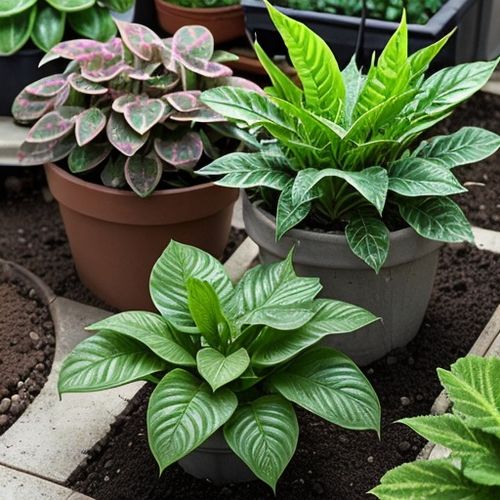For those who have ever proudly brought home a lush green plant only to watch it wither within weeks, you’re not alone. Many self-proclaimed "plant killers" assume they simply lack a green thumb, but the truth is far more forgiving. The secret to thriving houseplants isn’t innate talent—it’s choosing the right plants to begin with. Some species are remarkably resilient, tolerating erratic watering, low light, and even the occasional forgetful owner. If you’re ready to redeem your plant-parent reputation, start with these forgiving varieties that thrive on neglect rather than perfection.
The Unkillable Champions Snake plants, also known as Sansevieria, are the ultimate beginner-friendly choice. With sword-like leaves that stand tall even in dim corners, they’re practically indestructible. These plants store water in their roots, meaning they’ll forgive weeks of neglect. Spider plants are another hardy option, producing cascading tendrils with tiny "pups" that dangle like confetti. They tolerate low light and irregular watering, and if you do overwater, they’ll often bounce back with minimal fuss. For those drawn to tropical vibes, pothos vines are a no-fail pick. Their heart-shaped leaves trail elegantly from shelves or hang from macramé hangers, thriving in everything from fluorescent office lighting to indirect sunlight.
Why Some Plants Thrive While Others Perish The difference between a plant that survives and one that succumbs often comes down to adaptability. Many beginner-friendly plants originate from harsh environments where resources are scarce. ZZ plants, for example, hail from drought-prone regions of Africa, evolving thick rhizomes to store water. This makes them exceptionally tolerant of dry soil and low humidity—common challenges in air-conditioned or heated homes. Similarly, succulents like jade plants or aloe vera prefer infrequent watering, their fleshy leaves acting as reservoirs. Overwatering is far deadlier than underwatering for these species, a reassuring fact for chronic over-lovers.
The Stealthy Survivors Peace lilies are deceptive—their elegant white blooms suggest high maintenance, but they’re surprisingly tough. They droop dramatically when thirsty, providing a clear distress signal before springing back post-watering. Chinese evergreens (Aglaonema) are equally adaptable, their variegated leaves brightening dim spaces while tolerating sporadic care. For texture without the hassle, consider the rubber plant. Its broad, glossy leaves add instant jungle vibes, yet it withstands irregular watering and adapts to various light conditions. These plants don’t just survive; they flourish with minimal intervention, offering quick wins to rebuild confidence.
Breaking the Overcare Cycle New plant owners often equate attention with survival, leading to fatal kindness. Root rot from overwatering kills more houseplants than drought, especially in species like cacti or snake plants. The key is to mimic a plant’s natural habitat. Succulents prefer a "soak and dry" method—drenching the soil completely, then allowing it to dry out entirely. Tropical plants like philodendrons enjoy consistent moisture but despise soggy feet. A simple finger test (checking if the top inch of soil is dry) prevents guesswork. Remember: It’s easier to revive a parched plant than one drowning in excess water.
The Light Dilemma Demystified Light requirements intimidate many beginners, but solutions exist for every home. North-facing windows? Try cast iron plants (Aspidistra), which thrive in near-darkness. Bright, indirect light lovers like monstera deliciosa adapt to lower levels, though their leaf splits may lessen. If your space lacks natural light, grow lights offer an affordable fix. Even "medium light" plants often tolerate less-than-ideal conditions—they may grow slower but won’t perish. Observing your plant’s response is crucial; leggy stems or small leaves signal insufficient light, while scorched spots indicate too much direct sun.
Beyond Survival—The Joy of Growth Starting with resilient plants does more than prevent casualties; it creates positive reinforcement. Watching a pothos sprout new leaves or a snake plant produce a rare flower spike fosters a sense of accomplishment. These small victories build foundational skills—learning to read soil moisture, identifying light patterns, and resisting the urge to overwater. As confidence grows, so can your collection, gradually introducing slightly more demanding species. The goal isn’t perfection but progress, transforming serial plant killers into nurturing caretakers one un-fussy plant at a time.

By Thomas Roberts/Apr 25, 2025

By Daniel Scott/Apr 25, 2025

By Thomas Roberts/Apr 25, 2025

By Daniel Scott/Apr 25, 2025

By Lily Simpson/Apr 25, 2025

By Megan Clark/Apr 25, 2025

By Christopher Harris/Apr 25, 2025

By Amanda Phillips/Apr 25, 2025

By John Smith/Apr 25, 2025

By Michael Brown/Apr 25, 2025

By Daniel Scott/Apr 25, 2025

By Olivia Reed/Apr 25, 2025

By Elizabeth Taylor/Apr 25, 2025

By James Moore/Apr 25, 2025

By John Smith/Apr 25, 2025

By William Miller/Apr 25, 2025

By Daniel Scott/Apr 25, 2025

By Emma Thompson/Apr 25, 2025

By James Moore/Apr 25, 2025

By Ryan Martin/Apr 25, 2025